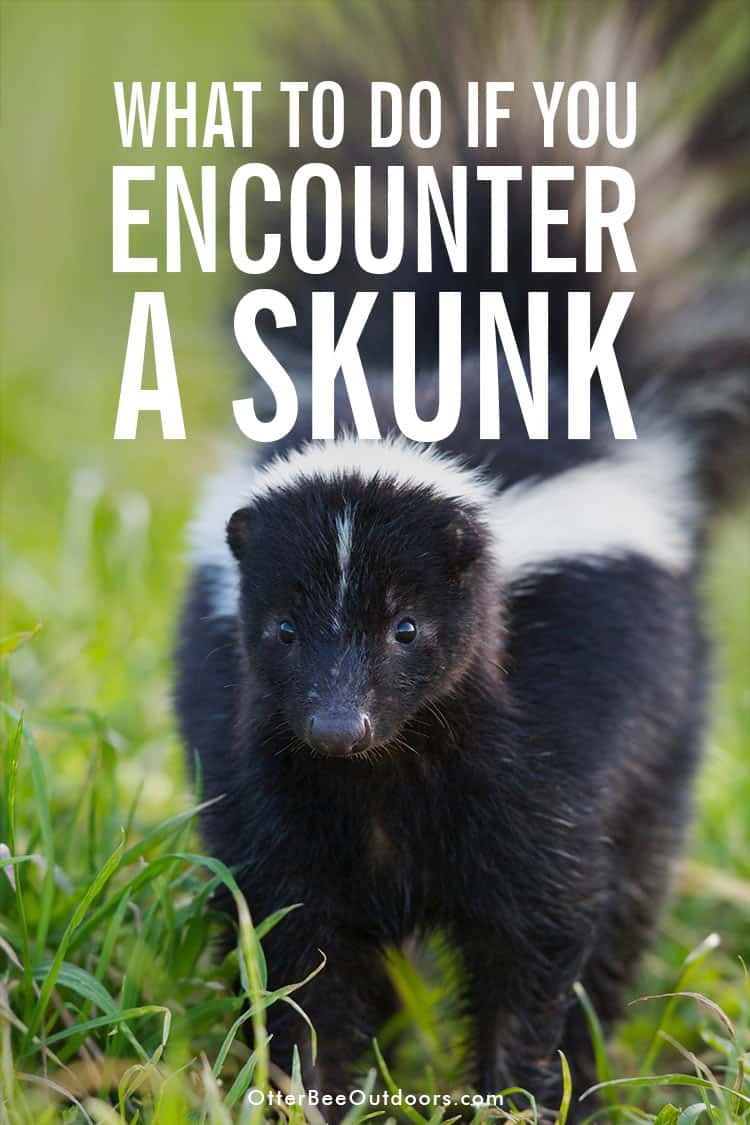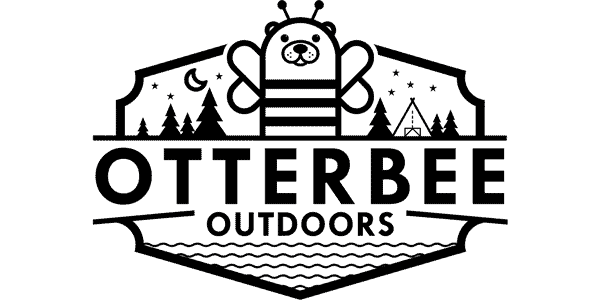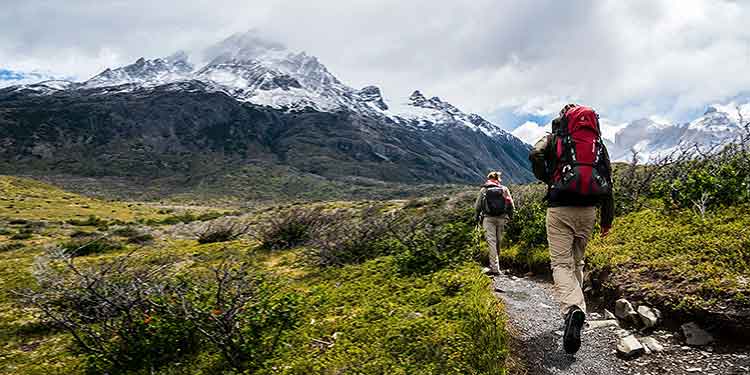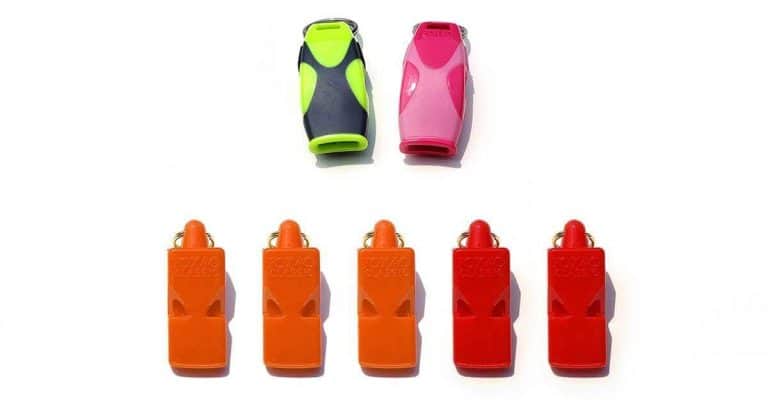Disclosure: I am compensated for purchases made through some links on this site. Click for details.
There’s a skunk that occasionally explores outside my house. I’ve not seen it, but I sure smell it when I walk the dog at dawn. It got me thinking about encountering a skunk while hiking. How do you avoid getting sprayed by a skunk?
To avoid getting sprayed by a skunk, give them plenty of space. They can spray up to 10 feet. If you see a skunk at a distance, back away slowly in a non-threatening manner. If you’re within range of being sprayed, stay calm and very still, the skunk will usually move on.
Let’s look further at what to do, especially when they turn their back on you to spray.
Know Your Skunk
We need to know what skunks look like if we’re going to avoid being sprayed. Most of us know Pepé Le Pew, but not all skunks look like this stinky, little lover.
There are four species of skunk commonly found in the United States, the striped skunk, hooded skunk, spotted skunk, and the hog-nosed skunk. Depending on the species, skunks will vary in length from about 15 – 37in and weight 1 – 18lbs.
Though the diet of skunks varies to some degree, they are primarily omnivorous. Meaning they’ll eat almost anything that’s readily available. These opportunistic creatures will eat plants, fruits, insects, smaller animals, garbage, and food you might leave around your campsite.
The appearance of these four species differ slightly but they share many common traits. Let’s take a closer look at each species…
Striped Skunks
Striped skunks are the most common you’ll find in North America. Their name like the other three describes their appearance. They are black with two white stripes running from their head to their tail.
Hooded Skunks
Hooded skunks primarily live in deserts, grasslands, and in mountain foothills. When hiking in the United States, you’ll find them in the Southwest. They are similar in look to the striped skunk though the pattern of stripe differs.
Hooded skunks are named for the thick patch of longer fur that extends from the top of their heads down their back to the tail which has long hair as well. There are three color variations in hooded skunks:
- Two thin lateral white stripes running down its back.
- One thick white stripe running down its back and a solid white tail.
- Mostly black with a few white hairs in its tail.
Spotted Skunks
Spotted skunks aren’t really spotted. They are more aptly described as having broken white stripes along the body and hind end.
For the United States, spotted skunks are broken down into eastern spotted skunks and western spotted skunks. The eastern and the western look much alike. The only difference in appearance is found in the white areas of the western spotted skunk. The white markings are more extensive.
When looking for skunks look above too, at least when hiking in the Eastern United States, the eastern spotted skunk can climb trees.
Hog-Nosed Skunks
American hog-nosed skunks primarily live in the Southwest. They can be identified by their white tail and a broad white stripe running from head to tail. Not to mention their “hog-like” nose.
The American hog-nosed skunk and hooded skunk with white hood can be found in the same region and may look similar. Here’s how to easily tell the difference… The hog-nosed skunk is the only skunk that lacks a white strip or dot between the eyes.
Recognize the Warning Signs
It’s common for many animals to camouflage themselves when you approach on a trail. They naturally hide from predators.
Not skunks!
Thankfully, skunks often give warning signs before spraying. They don’t want to spray you if they don’t feel they have to. Skunks have a limited supply of spray, only five or six shots and they’re out. It takes ten days to replenish leaving them vulnerable in the meantime.
Warning Signs Given by Skunks
You’re likely to receive a warning from a skunk before being sprayed.
The Warning Display
Skunks will normally go through a display of hissing, foot-stomping, tail-raising, and posturing, before spraying you. Spotted skunks even do handstands.
Anal Scent Glands
Even if they haven’t sprayed, you can usually smell when a skunk is near. Keep alert when you smell a skunk nearby.
Biting
Bites happen though skunks rarely bite humans unless they have rabies.
Aggression & Rabies
Encountering a skunk out in the day is a possible sign of rabies but it isn’t likely. Skunks do wander around during the day and are most active at dusk and dawn.
Signs of aggression are also a warning of possible rabies.
Trail Etiquette when Encountering a Skunk
Though skunks are nocturnal by nature, they can be active during the day. They are especially active at dusk and dawn.
If you encounter a skunk while hiking, you’re likely to smell them before you see them. When you get the scent of one, be on guard and look for those distinct black and white markings.
Seeing a Skunk at a Distance — Practice Avoidance
Avoidance is the best.
If you see a skunk at a distance, move away slowly. Give it space.
Simple, right?
Encountering a Skunk Upclose — Don’t Panic
It’s a bit trickier if you have a close encounter with a skunk on the trail. Skunks are nearsighted. They can’t see much more than 10ft, but they do have an excellent sense of hearing and smell. If startled, they may feel threatened and spray.
Don’t panic! Stay calm and nonthreatening. If the skunk doesn’t feel threatened, it won’t spray you.
If the skunk isn’t warning you off or showing other signs of aggression, be still. It will usually move along its way. Maybe it hasn’t sensed your presence. It’s best not to move. You may startle it.
If the skunk is giving you warning signs, slowly and quietly back away. Don’t make sudden movements.
I’ve read some advice that says to speak in soft tones as you back away. The idea is to make the skunk more aware of your distance upon retreating. I’m not sure about that. It can hear your footsteps as you back away. If you’re going to speak softly, this would be a great time to pray.
The Act of Being Sprayed by a Skunk — Yuck!
Well, you missed the warning signs or things just didn’t work out. Here’s what being sprayed looks like…
A skunk can quickly turn its back to you and spray up to 10ft with great accuracy. Spotted skunks often spray from a handstand position.
The skunk’s spray is made up of a pungent, oily sulfur compound. It’s not poisonous but as you know… It reaks! The spray can cause nausea, vomiting, irritation, and if sprayed in the eyes, temporary blindness.
What to Do When You Get Sprayed by a Skunk
Washing Off The Skunk Spray
I always heard you needed to bathe in tomato juice after being sprayed. Have you heard that too? Well, don’t. There’s a better way…
Mix up and bathe with the following treatment:
- 1 quart 3% hydrogen peroxide
- ¼ cup baking soda
- 1 teaspoon dish soap
The hydrogen peroxide and baking soda help to eliminate the smell and the dish soap breaks down the oil.
Bathe, rinse, repeat as many times as you want. The solution is safe but it can lighten your hair if you leave it in there more than a few minutes.
The remaining smell after bathing will dissipate over the following days.
Tip: Always keep these ingredients on hand at home.
Wash Your Clothes ASAP
Wear rubber gloves and wash your clothes, backpack, and anything else outside with the hydrogen peroxide, baking soda, and dish soap solution.
Or better yet, just throw out anything that you really don’t want to save.
Protect Your Car
Preventing Contact with your Car
Consider keeping a “skunk kit” in your car. Plastic to cover your seats and rubber gloves to keep oils off your steering wheel.
Ridding Your Car of the Skunk Smell
If you get the smell in your car, it will be difficult to remove and will show up for years when the car gets hot.
The sooner you clean your car the better.
Consider throwing out anything the oil may have transferred to like floormats.
Clean the interior with the same hydrogen peroxide, baking soda, and dish soap solution as mentioned above. Once dry you can also try sprinkling baking soda to soak up some of the smell. Let it sit for and while and then vacuum. I’d recommend vacuuming at an auto wash or gas station. The suction is more powerful and you won’t be destroying your vacuum with that smell.
Tips for Encountering a Skunk when Hiking with Your Dog
Your dog wants to play, protect you, and follow its hunting instinct. These natural tendencies can easily get your dog sprayed by that skunk. You too!
Preventing Your Dog from Getting Sprayed by a Skunk
You don’t want to deal with your dog after an unfortunate encounter with a skunk on a trail. To protect your dog from being sprayed, practice the following:
- Leave your dog at home?
- Keep your dog on a leash no longer six feet in length.
- Keep your dog as calm and nonthreatening as possible. This is always easier with a well-trained dog.
- Keep your dog updated on its rabies shot.
Getting Your Dog Home After Being Sprayed by a Skunk
Avoid putting your dog inside your car if it’s been sprayed by a skunk.
I hope you have a truck and can put your pup in the back not inside… Consider calling a friend with a truck.
If you have to put your dog inside, confine it in a kennel if possible.
Washing Your Dog After It’s Been Sprayed by a Skunk
If your dog happens to get sprayed, try your best to keep the spray wet until you can neutralize and wash off the funk. Once it’s dried, it’s harder to get rid of.
Don’t touch your dog without rubber gloves or you’ll get the spray on you too. It’s oily and will easily transfer to you.
According to The Humane Society of the United States, the same solution for washing with hydrogen peroxide, baking soda, and dish soap will also work for your dog.1 Wash your dog outside. You don’t want that smell in your home.
Dealing With Skunks While Camping
Here’s what you should do to protect yourself from skunks when camping and hiking…
Food at Campsites Attract Skunks
Skunks will be attracted to food at your campsite. To prevent attracting a skunk, take the following precautions:
- Keep food away from where you sleep.
- Cook downwind from the camp or at least where you sleep.
- Prepare your food away from your campsite or at least sleeping area and don’t leave scraps around.
- Store your food with skunk prevention in mind.
- Keep your food in your cooler and in your car if it’s nearby. I don’t like this option if you are in bear country.
- Use a bear-resistant canister or bear sack.
- Hang your food from a tree or pole.







